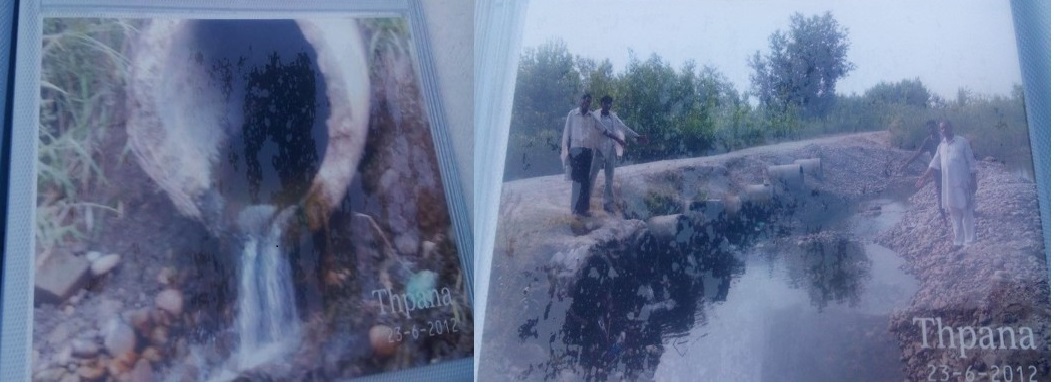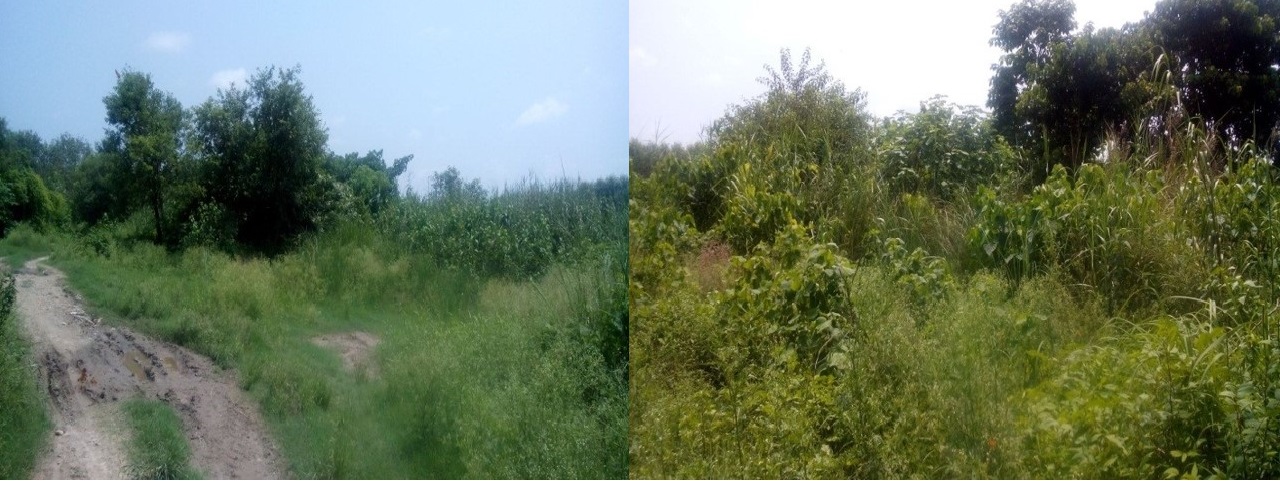
River Yamuna, the largest tributary of river Ganga, is the most threatened river system in the country. It faces over abstraction of water and increasing pollution load (municipal and industrial) throughout its course. The river has no worthwhile perennial tributary along its most threatened 600km stretch--from Hathnikund (Haryana) to Etawah (Uttar Pradesh)--where it is revived after meeting with river Chambal. The Somb-Thapana catchment is a tributary feeding the Yamuna.
 While the Yamuna is widely considered ‘a stinking river in the highly-populated city of Delhi’, Somb-Thapana catchment provides a stark contrast. Thapana is an aquifer-fed perennial stream which joins the Somb, a seasonal tributary of the Yamuna, at Yamuna Nagar, Haryana. With its lush green land, restored flood plains, visibly high water quality, and the continued efforts of highly-motivated communities working to restore the Yamuna, this catchment is a unique site in the system.
While the Yamuna is widely considered ‘a stinking river in the highly-populated city of Delhi’, Somb-Thapana catchment provides a stark contrast. Thapana is an aquifer-fed perennial stream which joins the Somb, a seasonal tributary of the Yamuna, at Yamuna Nagar, Haryana. With its lush green land, restored flood plains, visibly high water quality, and the continued efforts of highly-motivated communities working to restore the Yamuna, this catchment is a unique site in the system.
Help at hand
The International River Foundation’s Thames-Ganga twinning programme was the catalyst for this river-restoration effort-- transferring river restoration knowledge from the UK’s Thames, (2010 Thiess International River prize winner) to the local Indian catchment. Earlier, the catchment was impacted by extensive farming activities leaving behind scanty riparian vegetation on the stream banks, which in turn, led to flooding of the nearby areas, disrupting the livelihoods of communities during heavy rainfall.
 With the help of Thames River Restoration Trust in 2010, Nadi Maitri Mandals (friends of rivers), the communities of highly-motivated individuals, got together in Kanalsi village to restore the river which provides water for irrigation and other domestic needs. Information, education and communication (IEC) activities were carried out with different village communities throughout the programme. However, the students of Kanalsi and nearby villages became the prime focus. School teachers within the local villages were educated about river restoration and were involved in day-to-day activities. Thus teachers, along with students, were identified as change agents.
With the help of Thames River Restoration Trust in 2010, Nadi Maitri Mandals (friends of rivers), the communities of highly-motivated individuals, got together in Kanalsi village to restore the river which provides water for irrigation and other domestic needs. Information, education and communication (IEC) activities were carried out with different village communities throughout the programme. However, the students of Kanalsi and nearby villages became the prime focus. School teachers within the local villages were educated about river restoration and were involved in day-to-day activities. Thus teachers, along with students, were identified as change agents.
Local effort pours in
Plantation activities in the riparian zone were carried out for flood-bank restoration by different groups of individuals including civil society organisations, villagers and Thames trust representatives. The barren and sparsely-vegetated banks were assessed for re-plantation, especially to protect the forest upstream. The banks were planted with poplar trees which are also in high demand for timber by the locals. The outcomes of the activities undertaken as part of the project were evident during my visit to Kanalsi and Mandoli village--Somb showed biodiversity restoration which protects the village from floods, the migratory birds have returned and butterflies are spotted.

River Thapana is a groundwater-fed stream. Before the conservation activities began in 2010, the stream was parched which affected the water table in the area. To conserve and restore the stream, the communities ensured it held enough water and since then, they have been protecting it. Now the stream is sustaining itself and the groundwater level in the area is being replenished and maintained. As a result, biodiversity has returned and locals have spotted crabs and fish that were once extinct in the system. Till date, the communities are conserving and protecting the stream by prohibiting fishing and keeping a watch for any other illegal activities.
The continued motivation and work of the communities towards protecting the river catchment has improved the water quality. What more? The communities have realised that the water quality is being affected by fertilisers and are now progressing towards organic farming to protect waterways from pollution.
The author is coordinating the 19th International River symposium, managed by International River Foundation, that will be held from September 12-14, 2016 in New Delhi. She visited the Somb-Thapana catchment to look at the river restoration and conservation efforts in order to map a study tour of interested delegates following the symposium.
/articles/saving-catchment-area